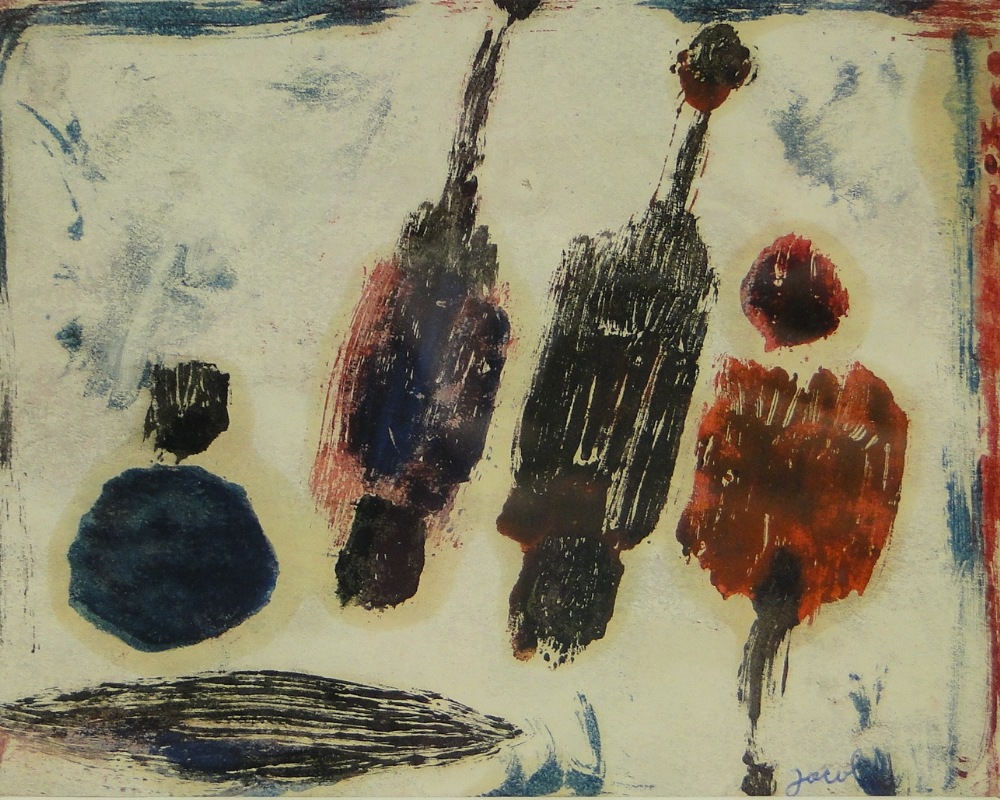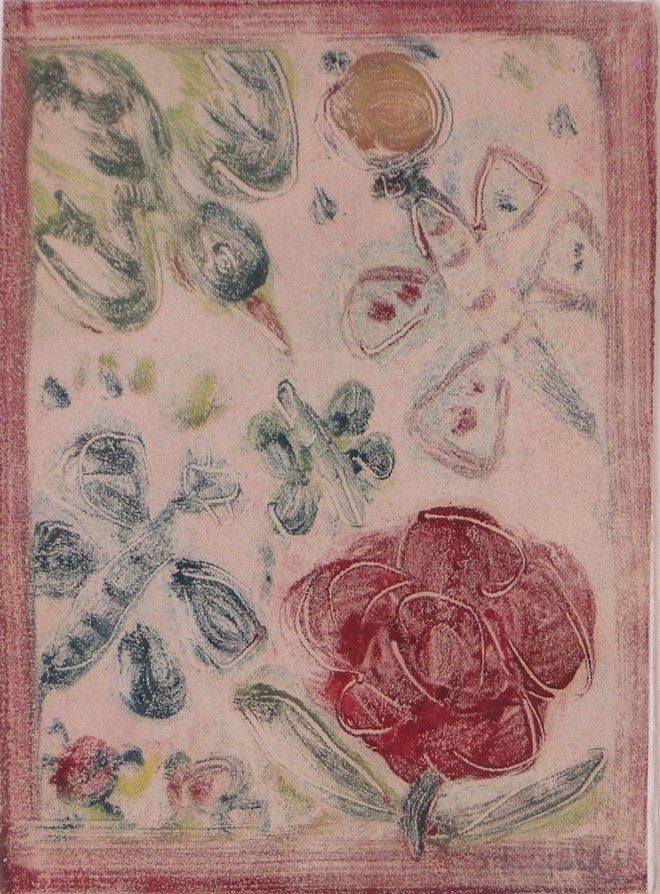Jacob Bornfriend (1904–1976) was born in Zborov, Czechoslovakia, where he was brought up on a small farm. He studied at the Academy of Fine Arts in Prague between1930–35 under the Expressionist artist Willi Nowak. During this time Bornfriend’s art was infused with Jewish references and he appropriated the folk-art traditions of his homeland. Like Jankel Adler, he was also influenced by the European figurative tradition and the Modern formal principles of the West. His drawings from the 1930s, including Figures in Interior and Figures in Garden, are filled with sculptural figures and reveal the influence of Cubism and Picasso’s figurative tableaux. There is also a Surrealist quality to works such as The Flood, one of a series of drawings in which a group of humans and animals swim across a flooded landscape.
In 1939 Bornfriend fled to the UK and settled in London where he remained until his death in 1975. Upon moving to the UK Bornfriend became part of a group of émigré artists who were classified as the Continental British School of Painting and included Jankel Adler and Peter Potoworowski. While the group was not a stylistic one, each artist played an important role in promoting figurative and representational art. Three Figures and Abstract Composition II are characteristic of the ways in which Bornfriend began to experiment with abstraction born out of a framework of figurative references. In these paintings the silhouettes of figures can be read amidst the harmonious intersection of shapes and colours.
By the late 1950s and 60s, however, Bornfriend focused on abstracting landscapes and still lifes, extracting shapes from the tangible and visible world around him. He perceived a unity between forms such as the tree and the land, and tried to capture this through the interconnection of simplified, organic shapes in ambiguous space. His work from this period reveals the two-way dialogue between himself and the British Abstractionists, including Patrick Heron and Peter Lanyon. Like these artists he used rhythmic patterns to convey a sense of energy and to capture “the dynamism of abundance” which he perceived in the British landscape and its changing seasons. There is an all-embracing rhythm and harmony to works such as Composition which recalls Heron’s paintings of his garden in Cornwall from 1956.
Bornfriend’s expressive images can also be read as explorations into colour, in which he achieves an emotional intensity by juxtaposing warm and cool tones in short and calligraphic strokes of colour. In Abstract Composition (1960) rich blocks of red are contrasted with pastel greens and deep purples. There is a buoyancy of spirit and a romantic, mystical mood to his later compositions and Bornfriend’s lyrical abstraction made a significant impact upon Modern British Art.

Jacob BORNFRIEND Abstract

Jacob BORNFRIEND Bird Butterfly and Flowers